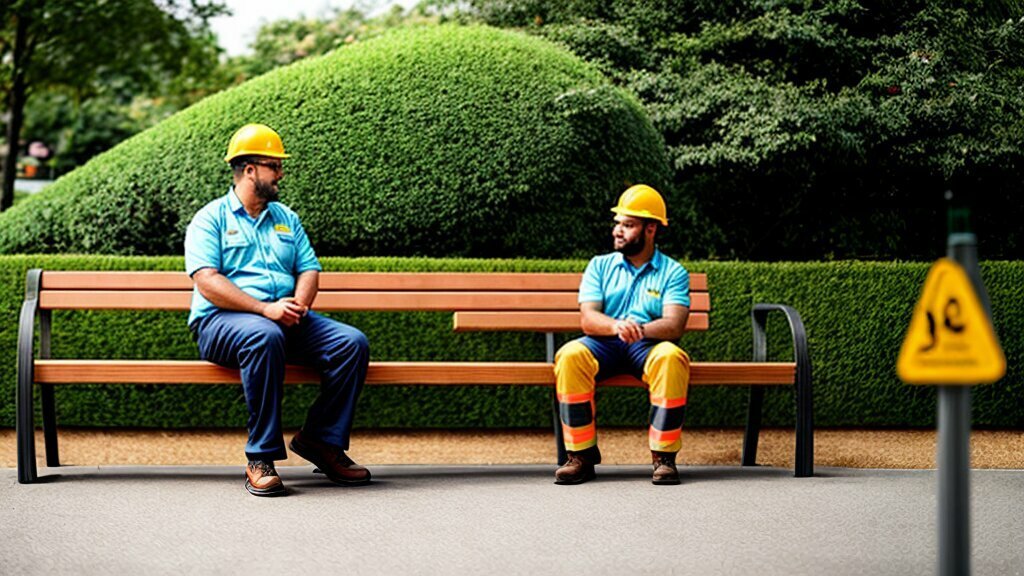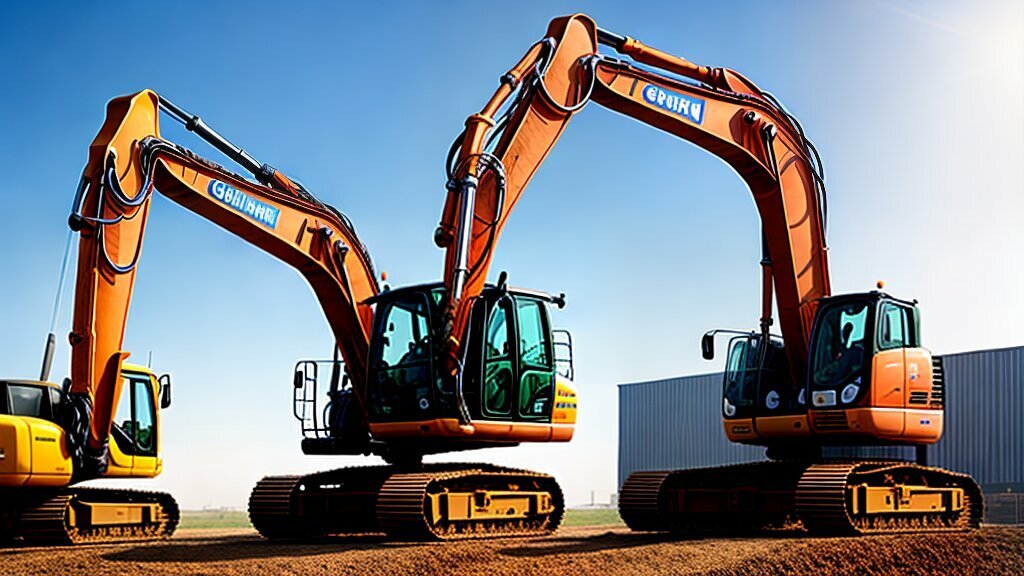Wearable Tech and Safety: Enhancing Worker Wellbeing in the Construction Sector
Welcome to our latest article, where we delve into the importance of enhancing worker wellbeing in the construction sector through the use of wearable tech and wellbeing initiatives. As you may know, the construction industry is one of the most hazardous sectors to work in, and it is crucial that we prioritize the wellbeing and safety of those working in this industry. In this article, we will explore how wearable technology is being used to improve worker wellbeing in the construction sector and the various wellbeing initiatives and wellness programs that are being implemented in this industry.
Key Takeaways
- Worker wellbeing and safety is crucial in the construction sector
- Wearable technology is being used to improve worker wellbeing
- Wellbeing initiatives and wellness programs play a significant role in promoting worker wellbeing in the construction sector
- Promoting worker wellbeing has positive outcomes, such as increased productivity and reduced absenteeism
The Role of Wearable Tech in Improving Worker Wellbeing
The use of wearable tech in the construction sector is revolutionising the way worker wellbeing is monitored and maintained. With the introduction of smart personal protective equipment (PPE), workers are now able to receive real-time feedback on their health and safety.
One example of wearable tech being used is the Smart Helmet. Equipped with cameras and sensors, it provides workers with a live feed of their surroundings and monitors their vital signs. This not only helps to prevent accidents but also ensures that workers are aware of potential hazards.
Another form of wearable tech is the smartwatch, which can monitor workers’ heart rates, body temperature, and stress levels. This data is then tracked over time, providing key insights into worker health and wellbeing. It also allows for early detection of potential health issues, ensuring workers receive appropriate medical attention.
The Benefits of Wearable Tech
By utilising wearable tech, workers are not only able to monitor their own wellbeing but also improve it. Real-time feedback and alerts allow for quick action to be taken in the event of an emergency, reducing the risk of injury or death.
Furthermore, wearable tech can help to reduce the physical strain on workers by providing insights into their movements and posture. This information can be used to modify work processes and prevent repetitive strain injuries.
Wearable tech also promotes a culture of safety in the workplace. By making worker wellbeing a priority, companies are creating a safer and more productive work environment, which in turn can have a positive impact on their bottom line.

As the construction sector continues to embrace wearable tech, we can expect to see further improvements in worker wellbeing and safety. By investing in these technologies, companies are not only fulfilling their duty of care to their workers but also reaping the benefits of a safer and more efficient work environment.
Wellbeing Initiatives and Wellness Programs in the Construction Sector
The construction sector is known to pose significant risks to worker health and safety. However, in recent years, employers have begun to recognize the importance of promoting worker wellbeing and mental health.
One example of a wellbeing initiative in the construction industry is the “Mates in Construction” program, which aims to prevent suicide and improve mental health outcomes among male construction workers.
| Program | Description |
|---|---|
| Stretch and Flex | A daily stretching routine for workers to help prevent musculoskeletal injuries. |
| Employee Assistance Programs | Confidential counseling services provided to employees to support their mental health and wellbeing. |
| Healthy Eating Programs | Initiatives to encourage healthy eating habits among employees, such as providing healthy meal options on site. |
These programs not only promote worker wellbeing but can also have positive effects on worker morale, productivity and retention. Employers who prioritize worker wellbeing can create a culture where workers feel valued and supported, resulting in reduced absenteeism and increased job satisfaction.
Investing in wellbeing initiatives and wellness programs in the construction sector can contribute to a safer and healthier workplace for all workers.

The Impact of Promoting Wellbeing in Construction
Prioritising worker wellbeing and promoting it through initiatives and programs can have a profound impact on the construction industry. Not only does a healthy workforce lead to increased productivity and reduced absenteeism, but it also improves worker satisfaction and mental health.
Studies have shown that integrating wellbeing initiatives into the workplace can lead to a 35% reduction in lost time injuries, a 42% reduction in short-term sick leave and a 20% increase in productivity. These statistics emphasise the importance of creating a safe and healthy working environment for all workers.
In addition, promoting worker wellbeing can serve as a competitive advantage for construction companies. It can demonstrate a commitment to worker safety and attract new workers to the industry. This is especially important in a sector that faces a skilled labour shortage.
Moreover, investing in worker wellbeing through the use of wearable tech and wellness programs can also lead to improved mental health. The construction industry is known for its rigorous and often demanding work, which can take a toll on workers’ mental wellbeing. Prioritising mental health can lead to a reduction in stress and anxiety levels, leading to increased worker satisfaction and decreased turnover rates.
Overall, promoting worker wellbeing in the construction sector is a win-win situation for both workers and companies. It leads to improved safety, increased productivity, and enhanced mental wellbeing. By prioritising worker wellbeing and using initiatives and programs to promote it, we can create a thriving and healthy construction industry for years to come.

Conclusion
In conclusion, it is clear that enhancing worker wellbeing in the construction sector is of utmost importance. The use of wearable tech and wellbeing initiatives is proving to be effective in improving worker health and safety, reducing absenteeism, and boosting productivity.
It is encouraging to see that the construction industry is taking steps to prioritize worker wellbeing and mental health through the implementation of various initiatives and programs. However, there is still much work to be done in this area.
Continued focus on the development and implementation of innovative solutions, such as wearable tech, as well as the promotion of wellbeing programs, is crucial in ensuring the safety and wellbeing of construction workers.
By prioritizing worker wellbeing in the construction sector, we can create a safer and more sustainable industry that benefits workers, companies, and society as a whole.
FAQ
Q: What is wearable tech?
A: Wearable tech refers to advanced electronic devices that can be worn on the body, typically as accessories or clothing. These devices are equipped with sensors and technology to monitor various aspects of health and well-being.
Q: How does wearable tech improve worker wellbeing?
A: Wearable tech can improve worker wellbeing by tracking vital signs, monitoring exposure to hazardous substances, and providing real-time feedback on posture and movement. This information enables workers to make informed decisions about their health and safety.
Q: What types of wearable tech are used in the construction sector?
A: In the construction sector, various types of wearable tech are used, such as smart helmets, smart vests, and smartwatches. These devices can monitor heart rate, body temperature, noise levels, and even detect hazardous gases.
Q: Are there any wellness programs specifically designed for construction workers?
A: Yes, there are wellness programs that are specifically designed for construction workers. These programs focus on promoting physical health, mental well-being, and work-life balance. They may include activities such as exercise classes, mental health support, and stress management workshops.
Q: What are the positive outcomes of promoting worker wellbeing in construction?
A: Promoting worker wellbeing in construction can lead to increased productivity, reduced absenteeism, improved mental health, and higher job satisfaction. It also contributes to creating a safer and more inclusive work environment.








